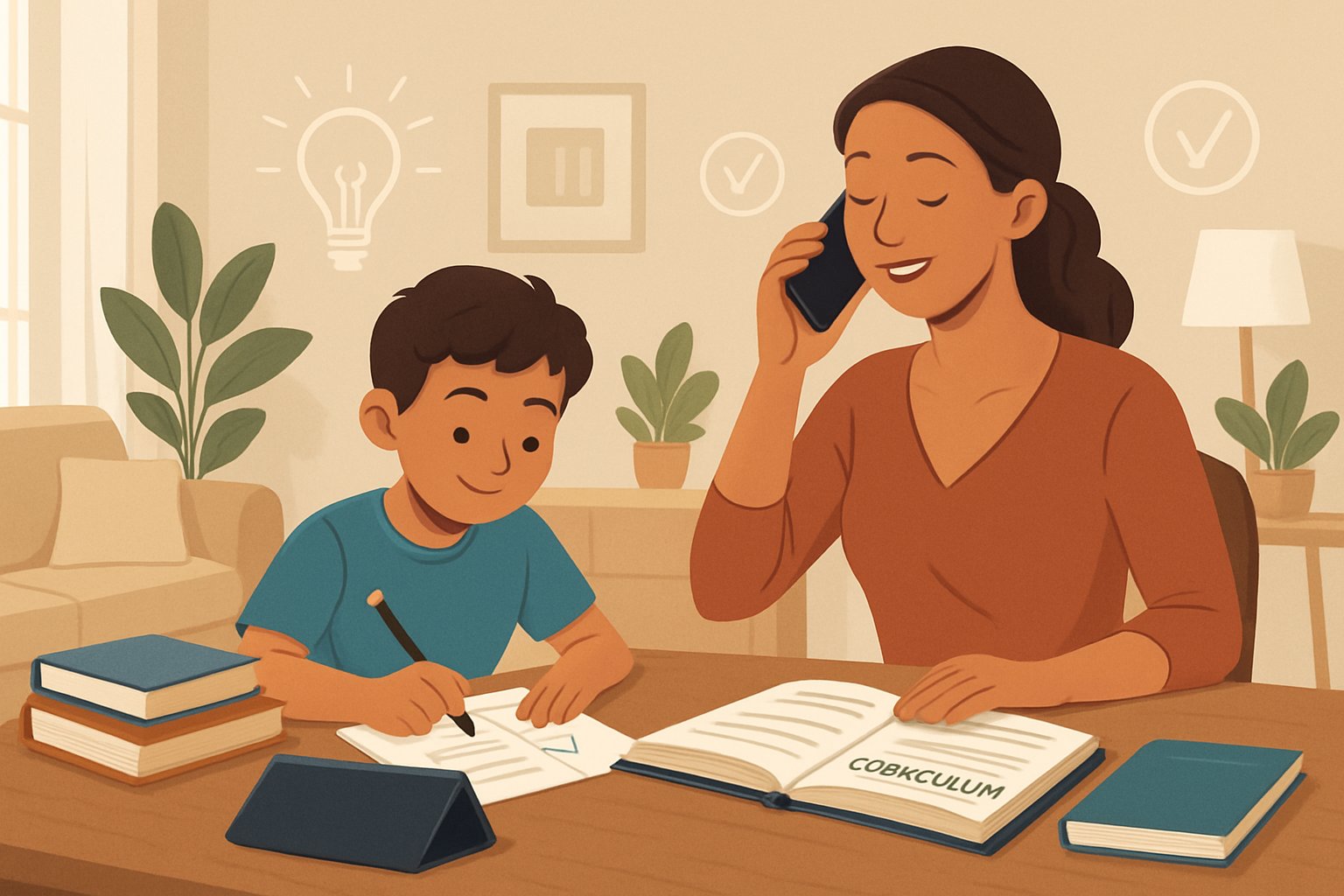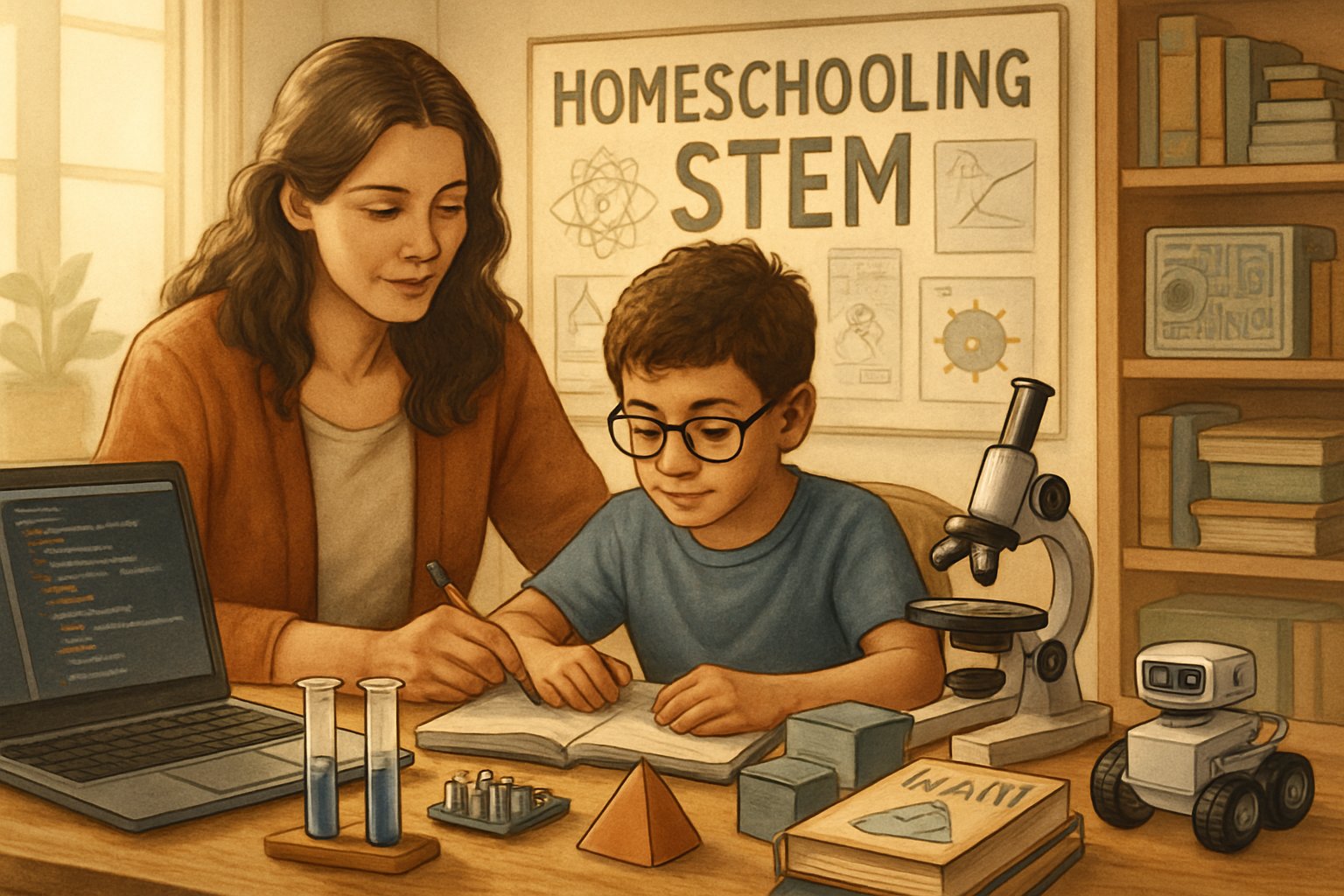Evaluating Your Homeschool Curriculum Mid-Year

Families often find that a mid-year review helps them see how well their homeschool curriculum aligns with their goals and their child’s learning needs.
Taking time to assess progress, teaching methods, and the home learning environment can reveal what’s working and what may need to change for the rest of the homeschool year.
Signs Your Curriculum Isn’t Working
When a curriculum doesn’t fit, it usually shows in daily lessons. A child might resist learning, seem bored, or show frustration during study time.
Frequent tears or complaints often point to a mismatch between the material and the student’s learning style or pace. Parents can look for patterns such as low engagement, incomplete assignments, or falling behind schedule.
If lessons drag on or the child forgets what was covered soon after, these are signs of ineffective instruction. As explained in a post from Wiser Homeschool, recognizing what’s not working helps families make practical adjustments instead of scrapping the entire plan.
It can also help to record short notes during lessons about what goes smoothly and what doesn’t. Over time, this simple tracking reveals clear trends that point to whether a curriculum meets the child’s needs.
Conducting a Mid-Year Homeschool Review
A practical review gives a structured way to reflect on the first half of the homeschool year. Families can use a simple checklist or planner to measure whether their goals and schedule are realistic for their child’s pace and interests.
To begin, parents can write out all the subjects covered and mark what’s on track and what’s behind. This type of mid-year homeschool review helps determine how lessons balance across core topics like math, reading, and science.
Many families also include enrichment activities, such as music or art, since these show how well-rounded the curriculum is. A short meeting with the child adds valuable perspective.
Kids often provide honest feedback about which activities feel helpful and which feel too repetitive or confusing. Their insights can guide smarter adjustments going forward.
Assessing Academic Progress and Focus
Strong academic progress means more than finished worksheets. It depends on whether the child understands key concepts and stays focused during lessons.
Parents can check comprehension through short oral questions, informal tests, or completed projects. Progress tracking tools such as grade sheets, writing samples, or math journals make patterns easier to spot.
The guide from Kids on the Yard suggests comparing completed lessons to learning goals set at the start of the term. This helps measure consistency and focus in relation to pacing.
If focus drops frequently, families can look for causes such as lesson length, distractions, or the time of day instruction occurs. Adjusting these factors can lead to better attention and smoother daily routines.
Considering Teaching Methods and Learning Environment
Even a solid curriculum can fall short if the teaching approach or setting isn’t right. Some students thrive with interactive lessons, while others prefer independent reading or hands-on projects.
Adjusting delivery methods often improves engagement without changing materials entirely. Observation plays a key role here.
Parents can notice when their child learns best—morning vs. afternoon, group vs. solo, paper vs. digital. According to The Homeschool Chick, reviewing teaching strategies throughout the year helps align the environment with the student’s learning style.
Small changes like reorganizing the study space, reducing distractions, or adding regular movement breaks can strengthen focus. A calm, organized environment supports clearer thinking, steadier progress, and a more positive homeschooling experience.
Planning and Implementing a Curriculum Change

Families can make mid-year curriculum changes without losing progress by setting clear goals, choosing materials that fit learning needs, and easing into new lesson plans.
Careful planning, gradual implementation, and ongoing evaluation help students stay confident and consistent with their homeschool routine.
When and How to Make the Switch
The best time to switch a homeschool curriculum is during natural breaks, such as after a grading period or holiday week. This pause allows families to reflect on what worked and what didn’t without interrupting active lessons.
Signs that a change is needed include declining motivation, uneven progress, and frustration during lessons. Parents can use short written reflections, quizzes, or progress logs to identify challenges.
If more than one subject seems off-track, it may be best to modify one area first before overhauling the entire plan. A structured process prevents burnout and confusion.
Creating a short checklist helps keep the transition organized:
| Step | Task | Goal |
|---|---|---|
| 1 | Review student performance | Identify gaps and strengths |
| 2 | Research new options | Match materials to goals |
| 3 | Set a start date | Allow time for preparation |
Adopting a planned approach, such as those found in Steps to Implement a New Curriculum Successfully, ensures that adjustments are clear and manageable for both parent and child.
Choosing the Right Replacement Curriculum
Selecting a new homeschool curriculum should focus on learning styles, subject coverage, and pacing. Families should first define goals, such as developing stronger reading comprehension or improving math fluency.
Short trials, free samples, and online previews offer helpful insights into structure and difficulty level. It’s useful to look for programs that align with state or national learning standards, similar to those discussed in Evaluating a New Curriculum: A Guide for Educators.
Ensuring alignment helps keep progress consistent with long-term goals and makes future transitions smoother. When comparing materials, parents might make a simple list:
- Core subjects: math, reading, science, writing
- Optional subjects: foreign language, art, coding
- Learning supports: online lessons, printed workbooks, tutor access
This structure helps match the curriculum to the child’s strengths and interests while ensuring balance across all subjects.
Transitioning Lesson Plans and Maintaining Continuity
After selecting the new curriculum, families should plan how to combine existing materials with new ones to maintain learning continuity. Short-term lesson overlaps—such as reviewing topics before introducing new content—help reinforce understanding.
Creating a transition plan with weekly goals ensures lessons stay on track. A parent might keep one old resource for revision while introducing new content gradually.
Tools such as digital planners or spreadsheets can help track tasks, homework, and assessments. Adapting the format from the Curriculum Implementation Guide can make lesson sequencing more transparent and manageable.
Maintaining communication with the student is essential. Asking for feedback, observing mood changes, and adjusting schedules when needed promote steady progress.










